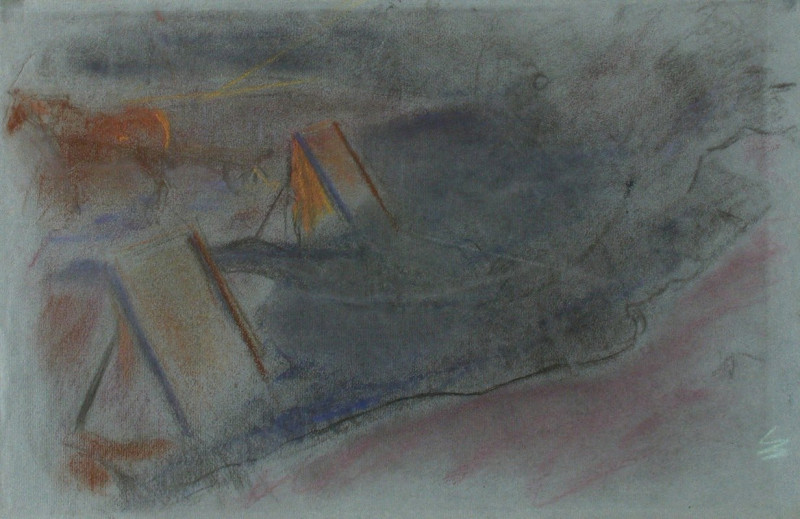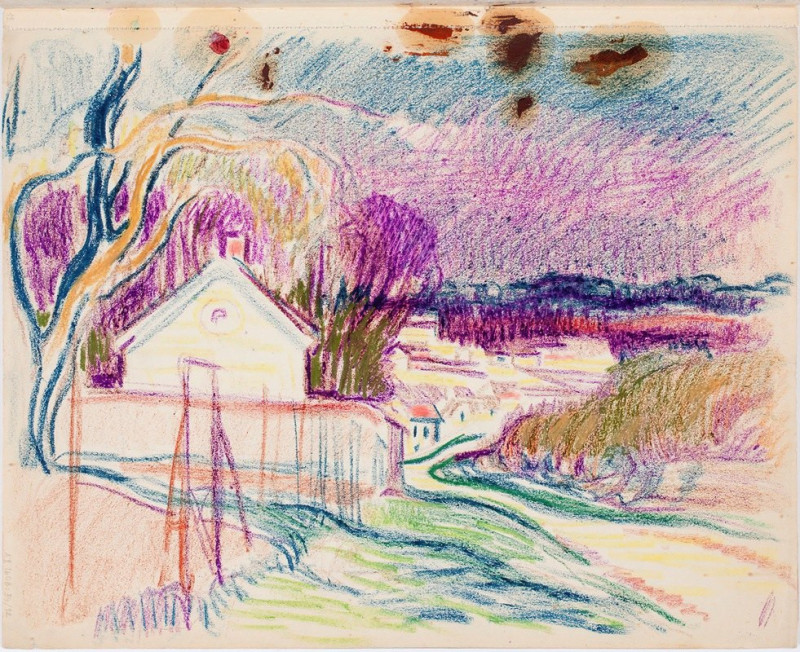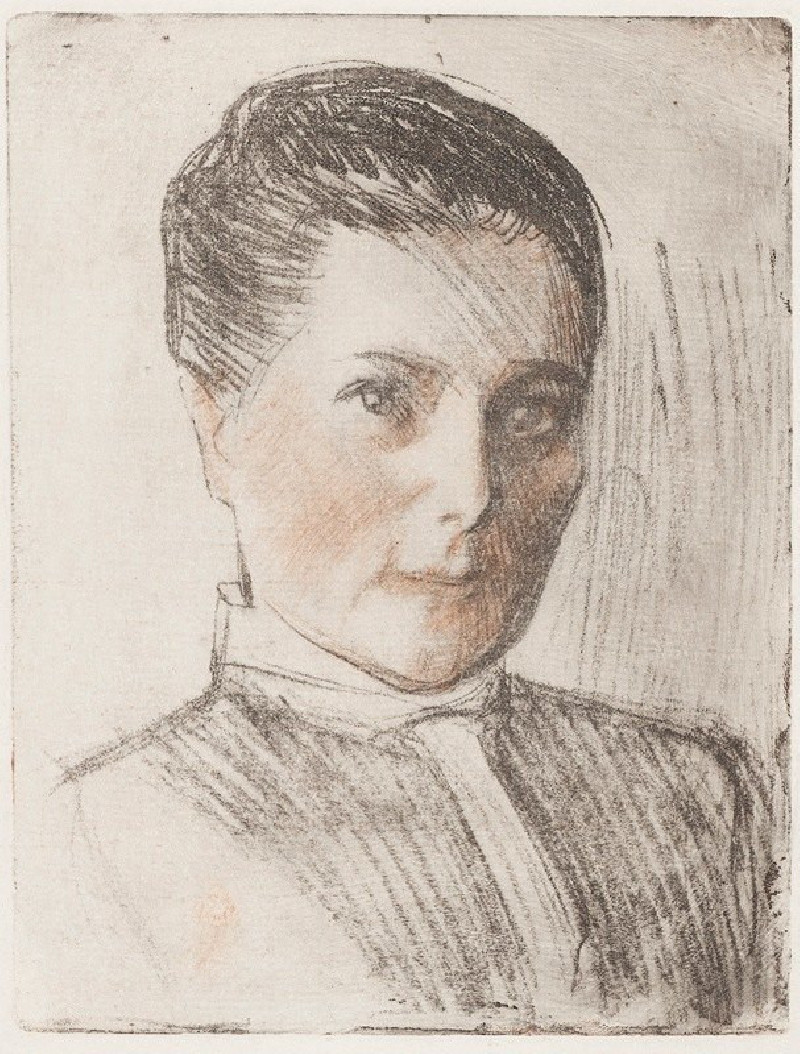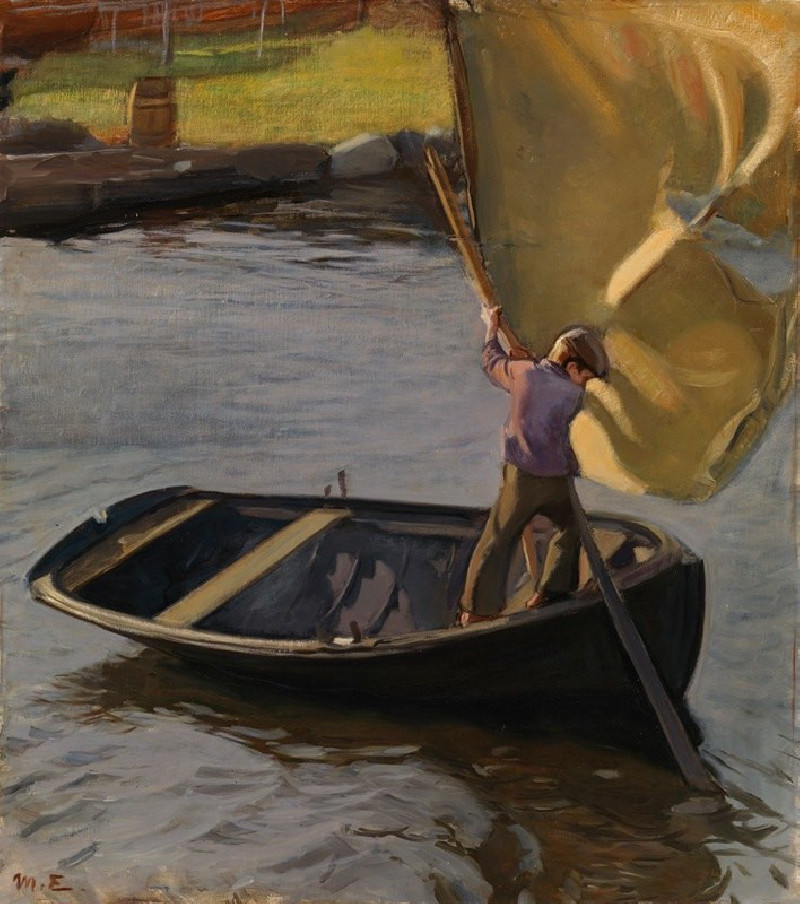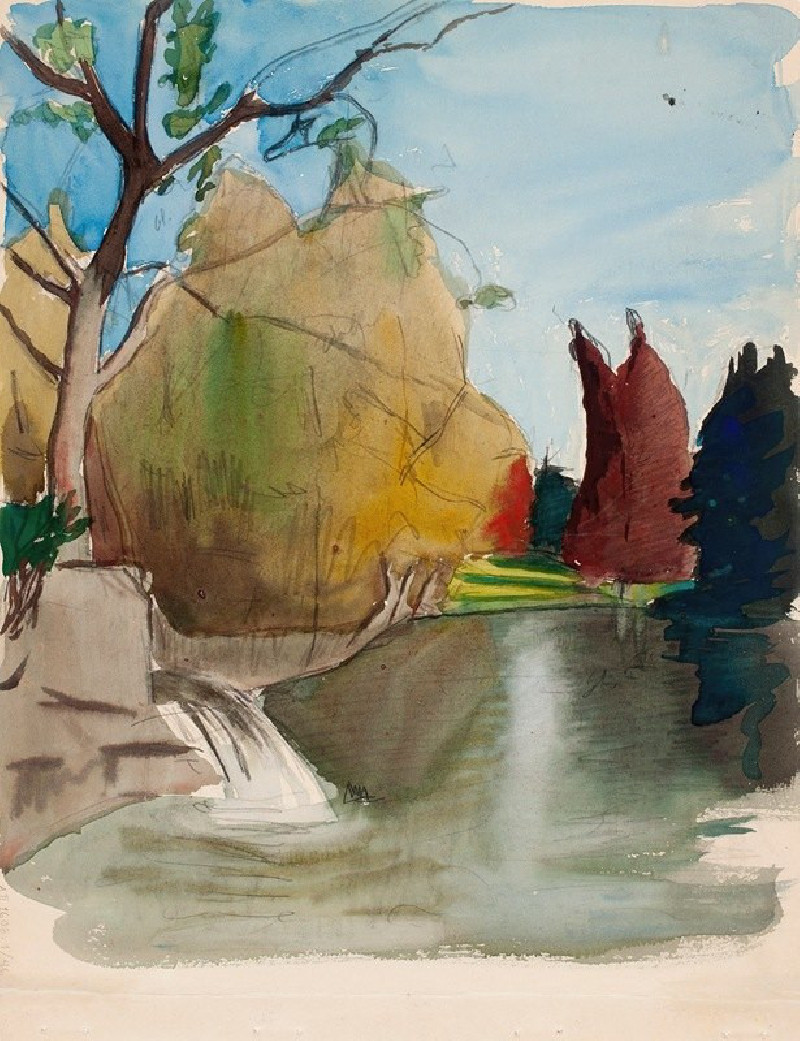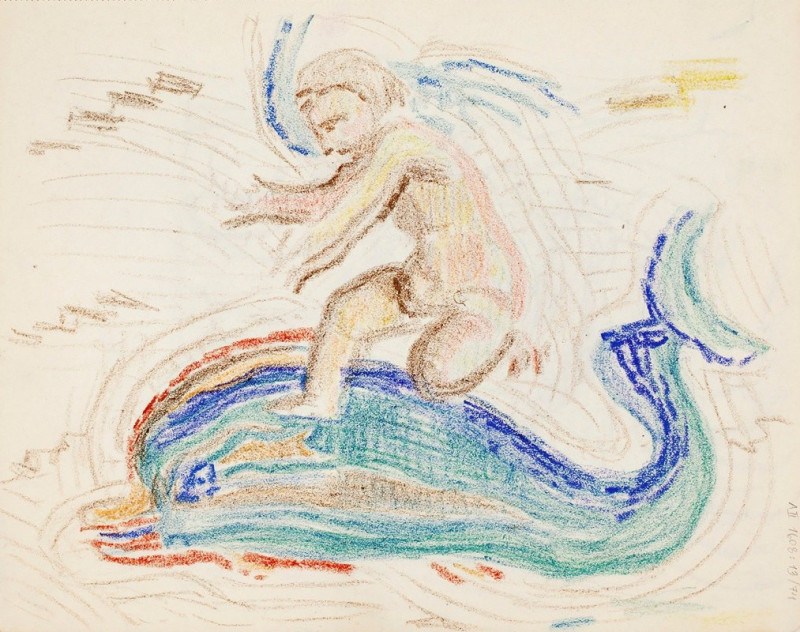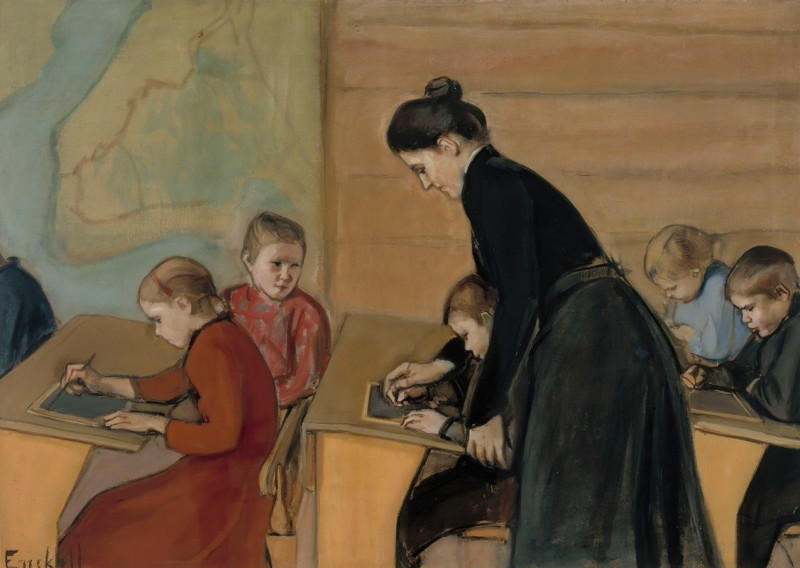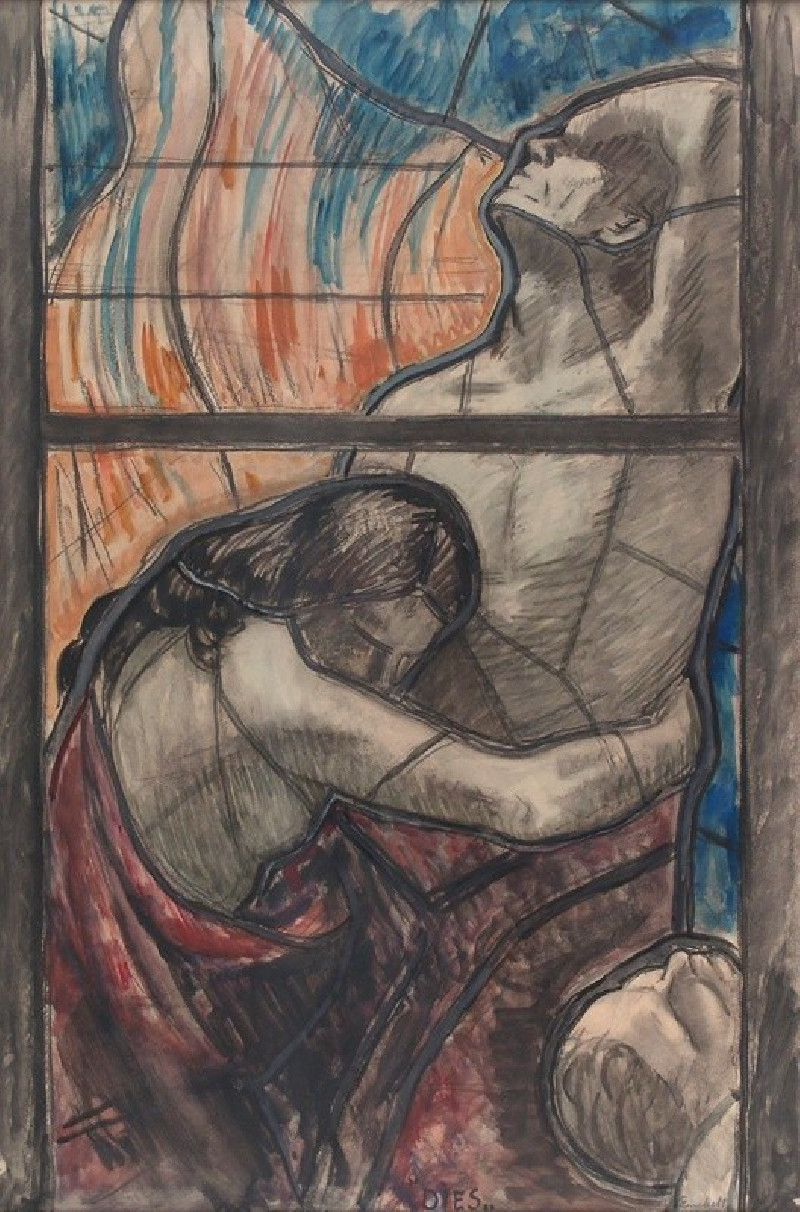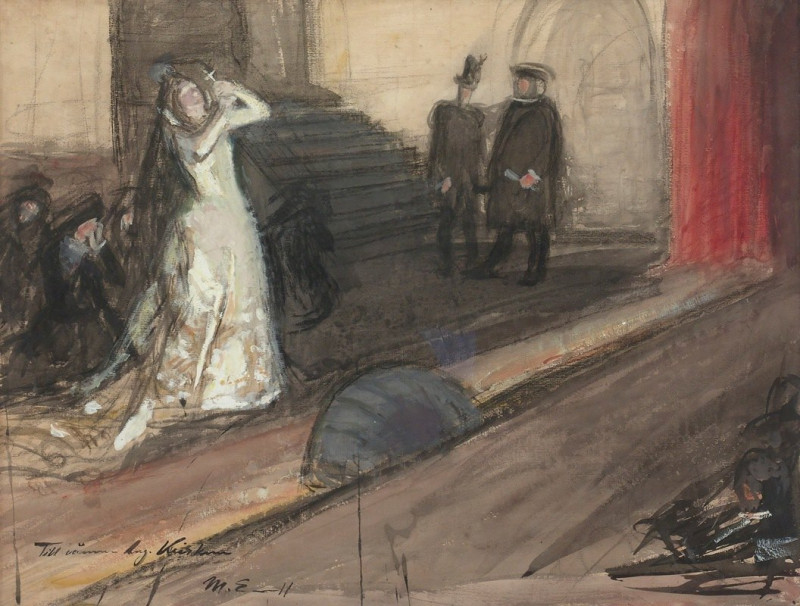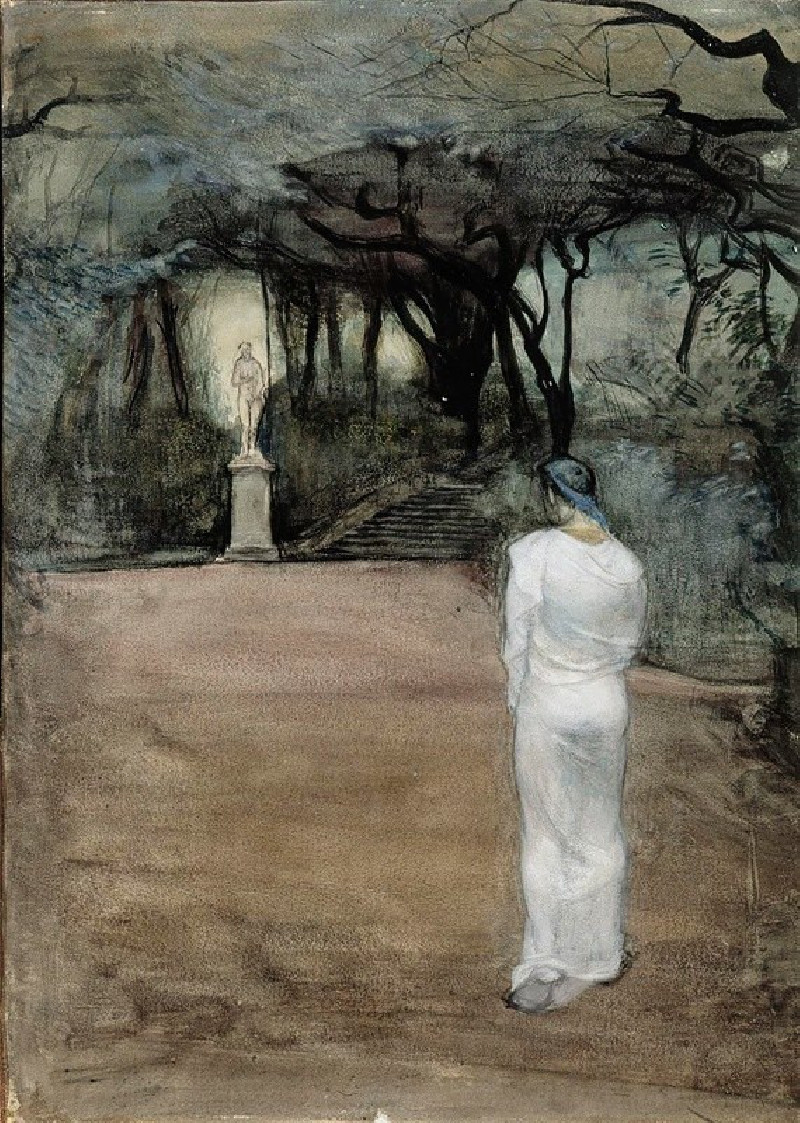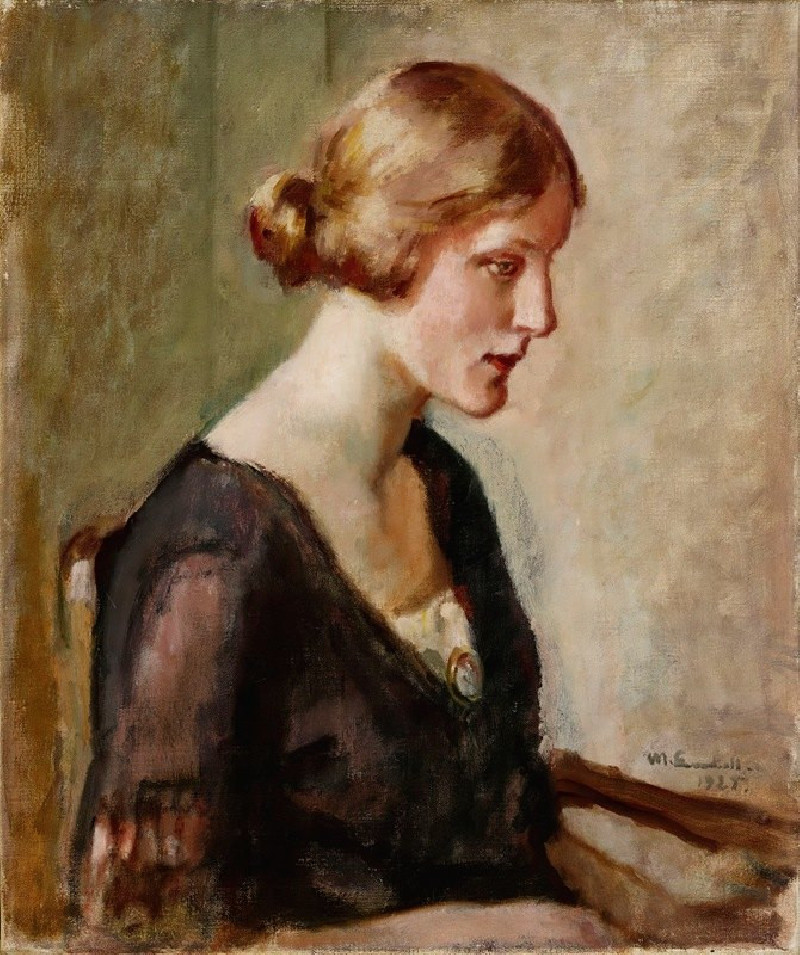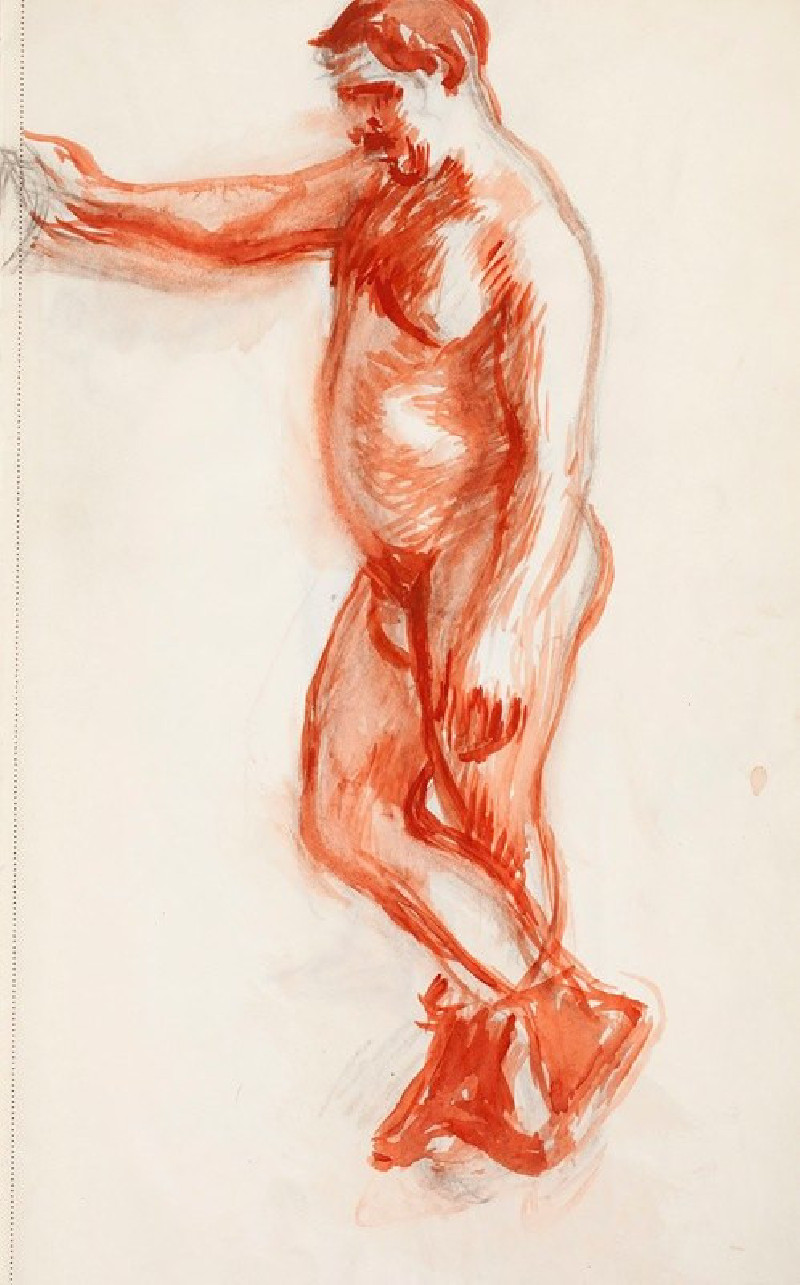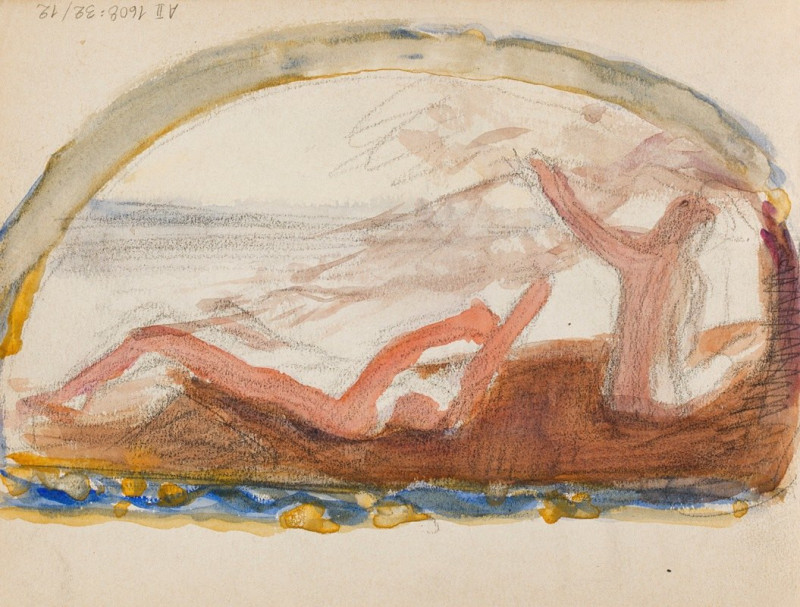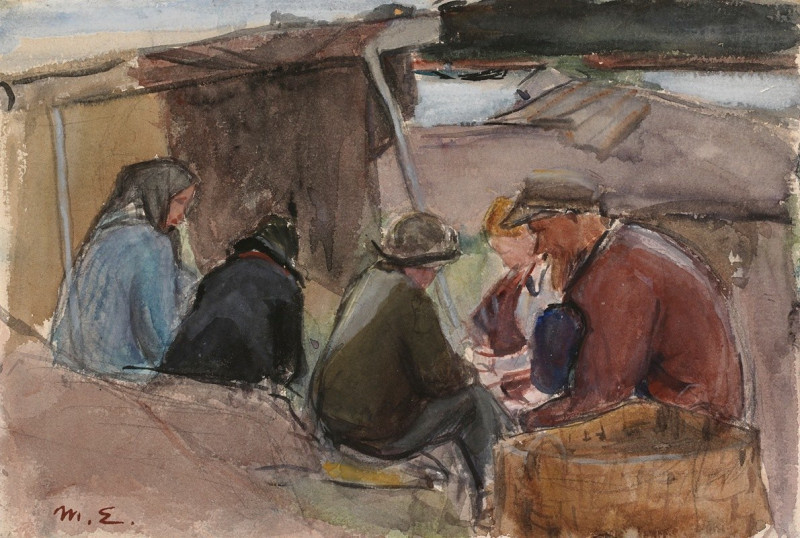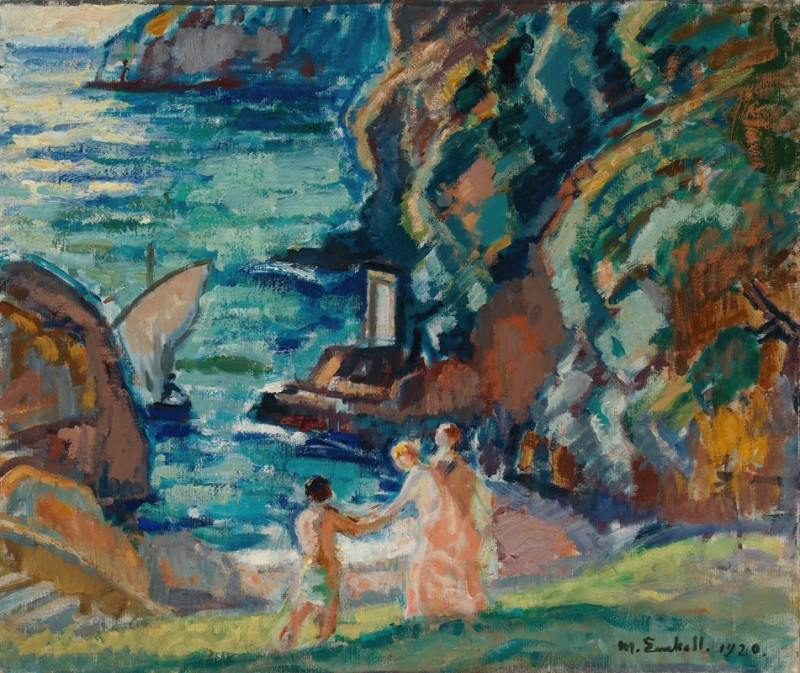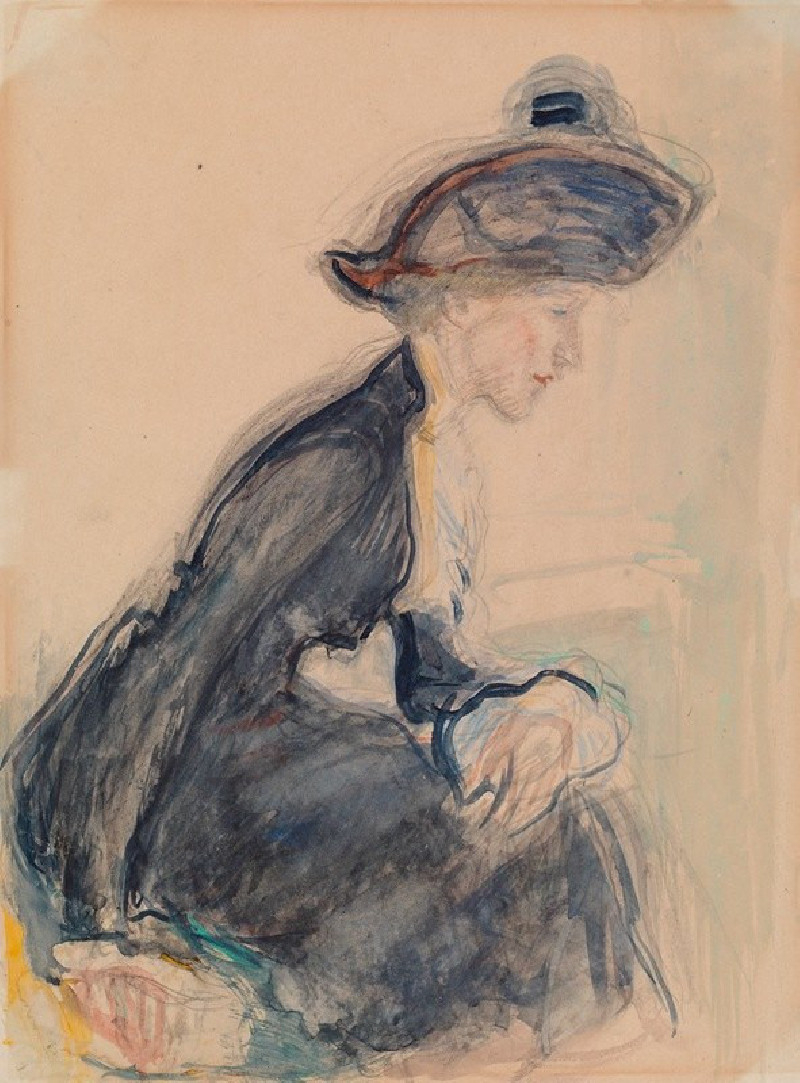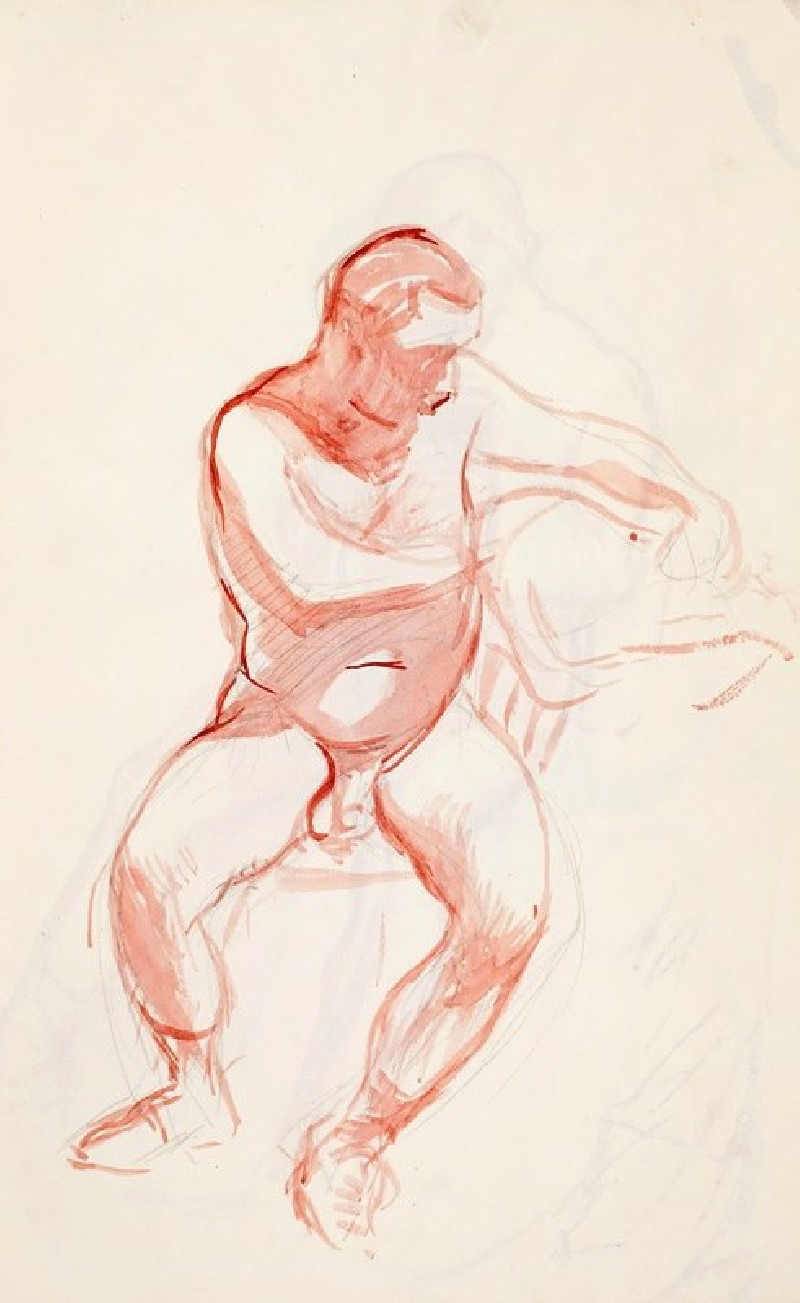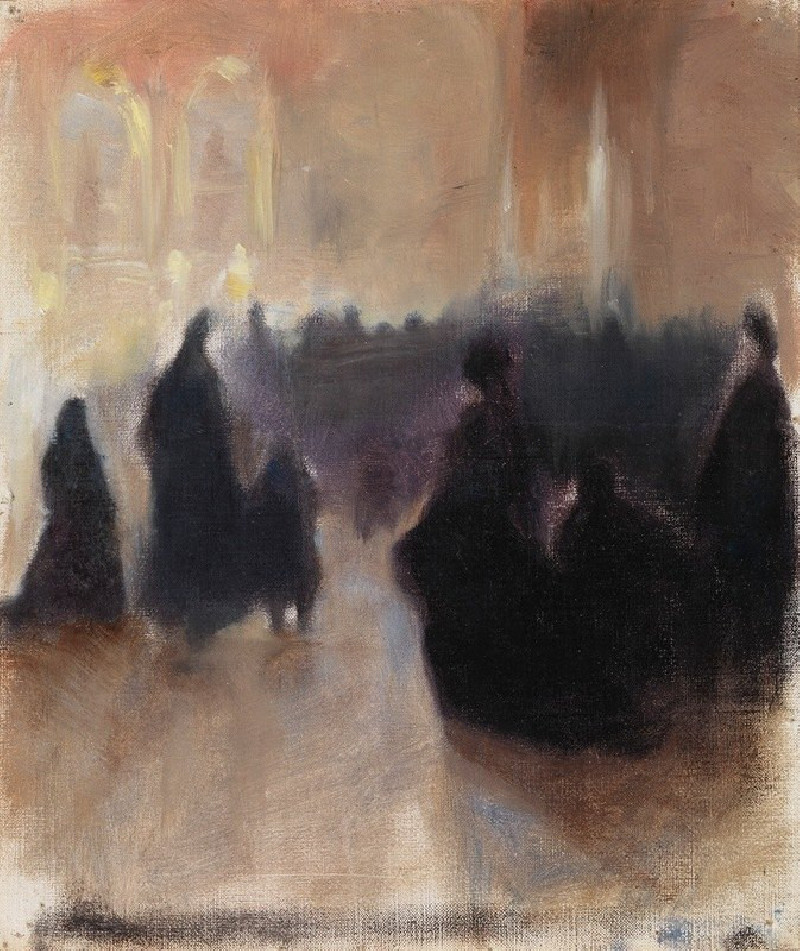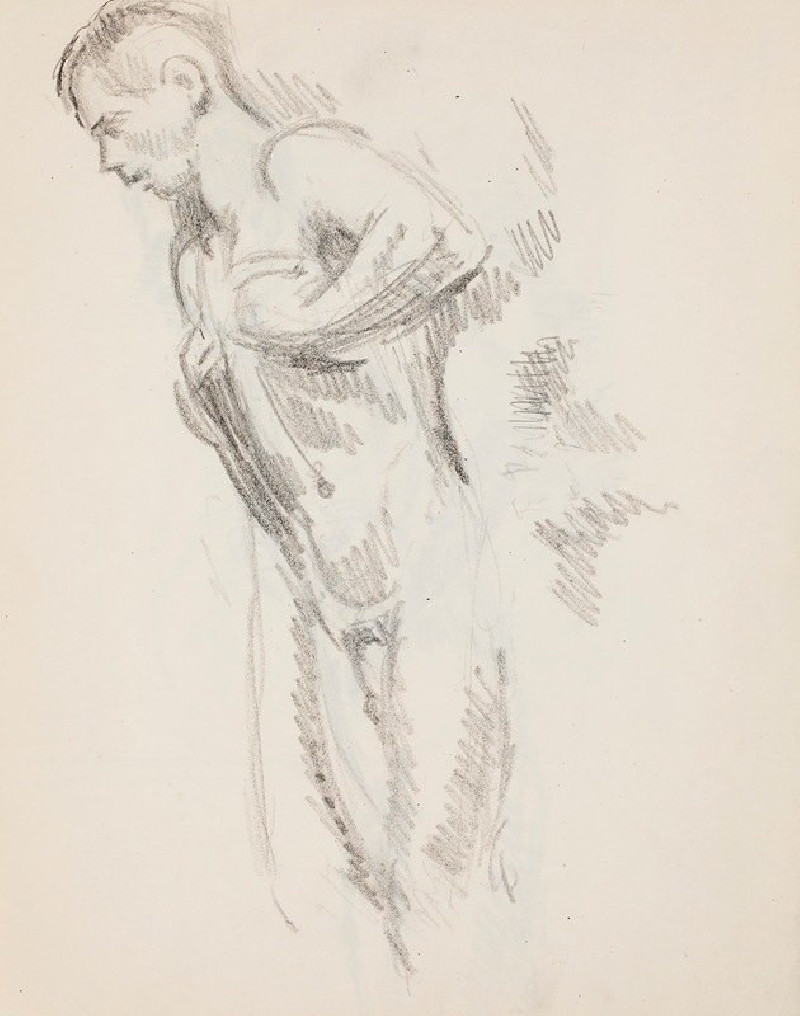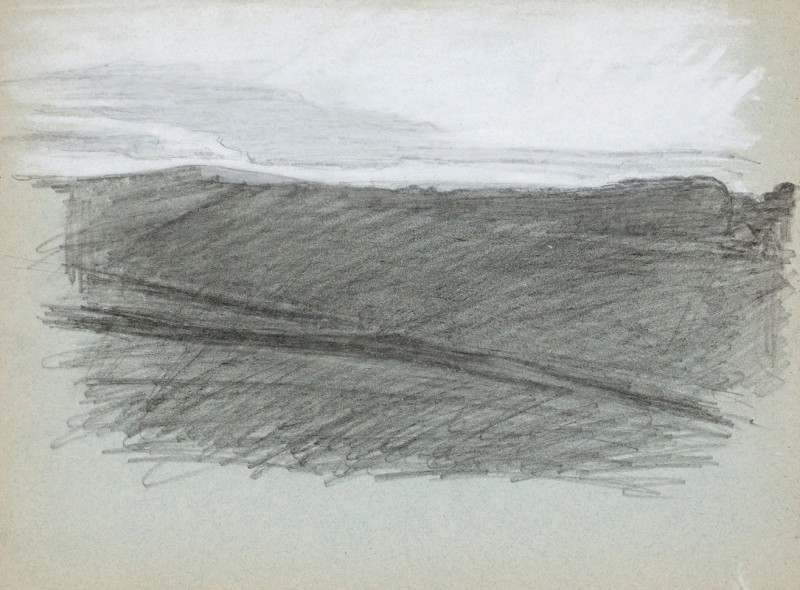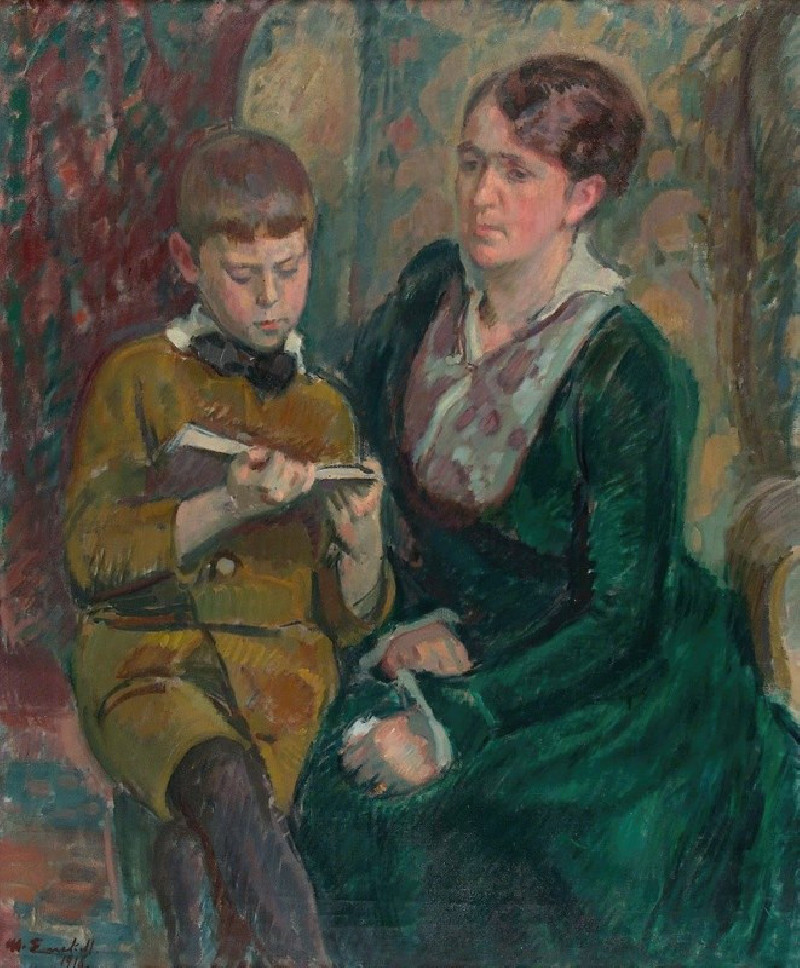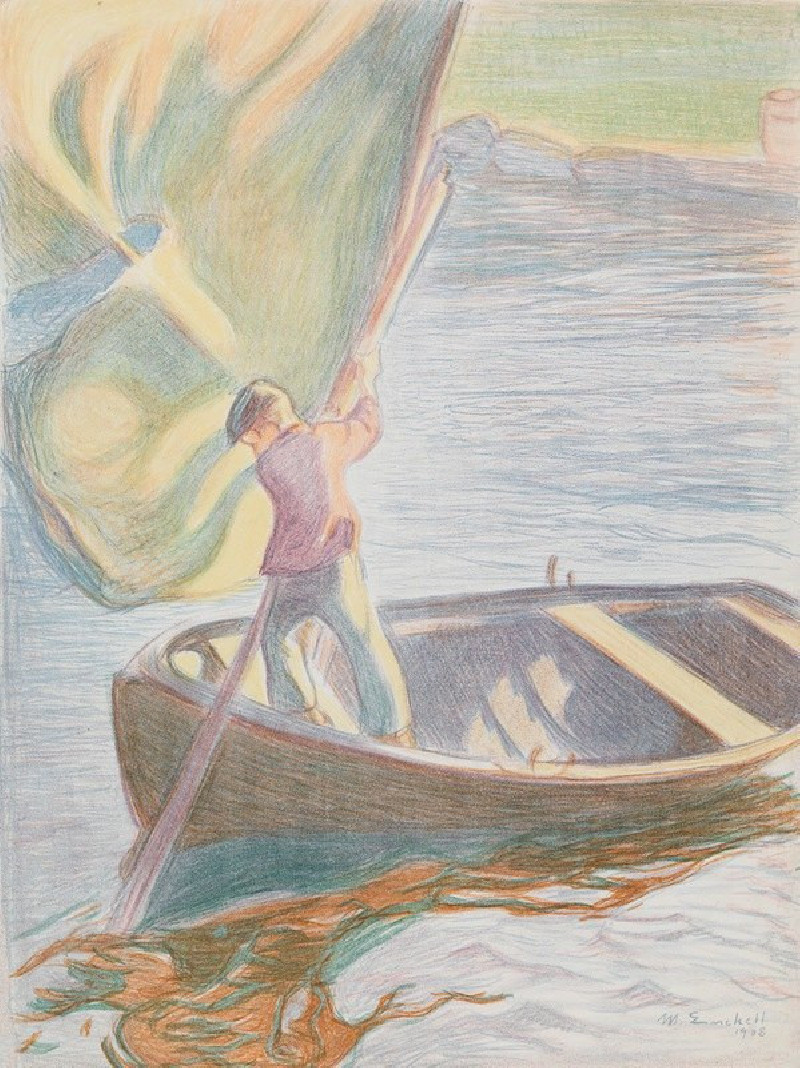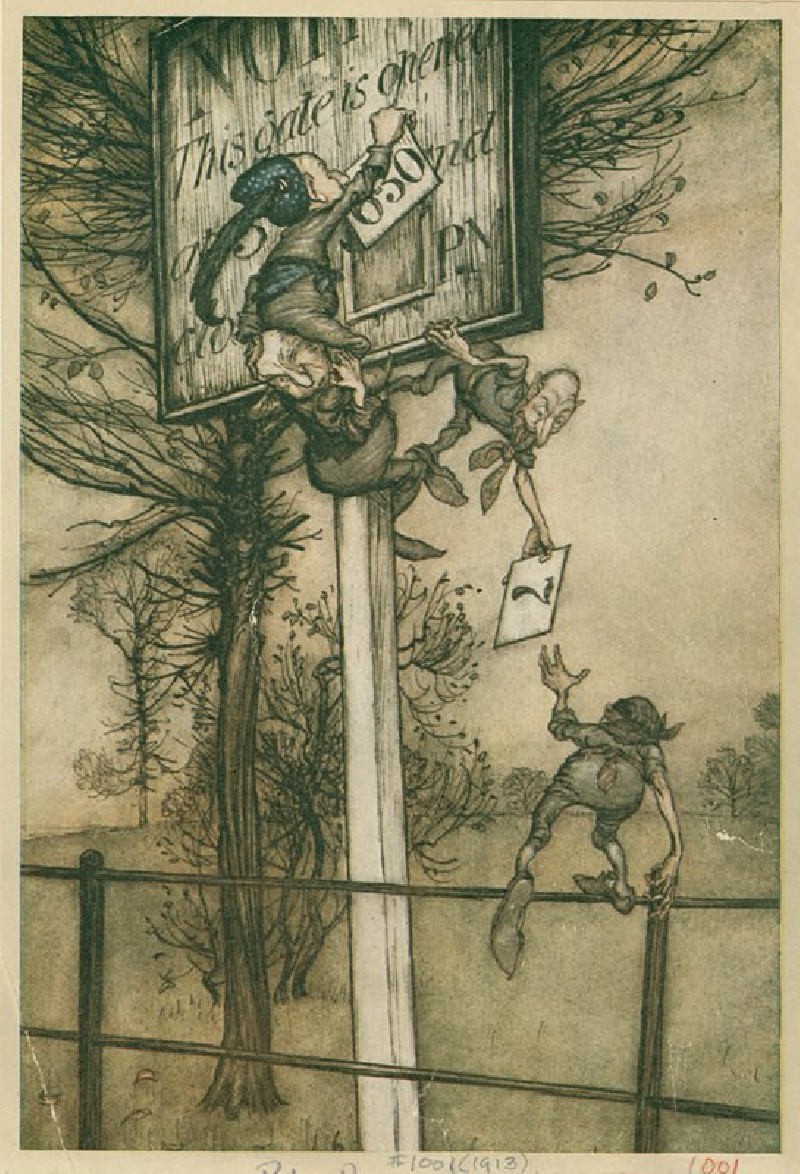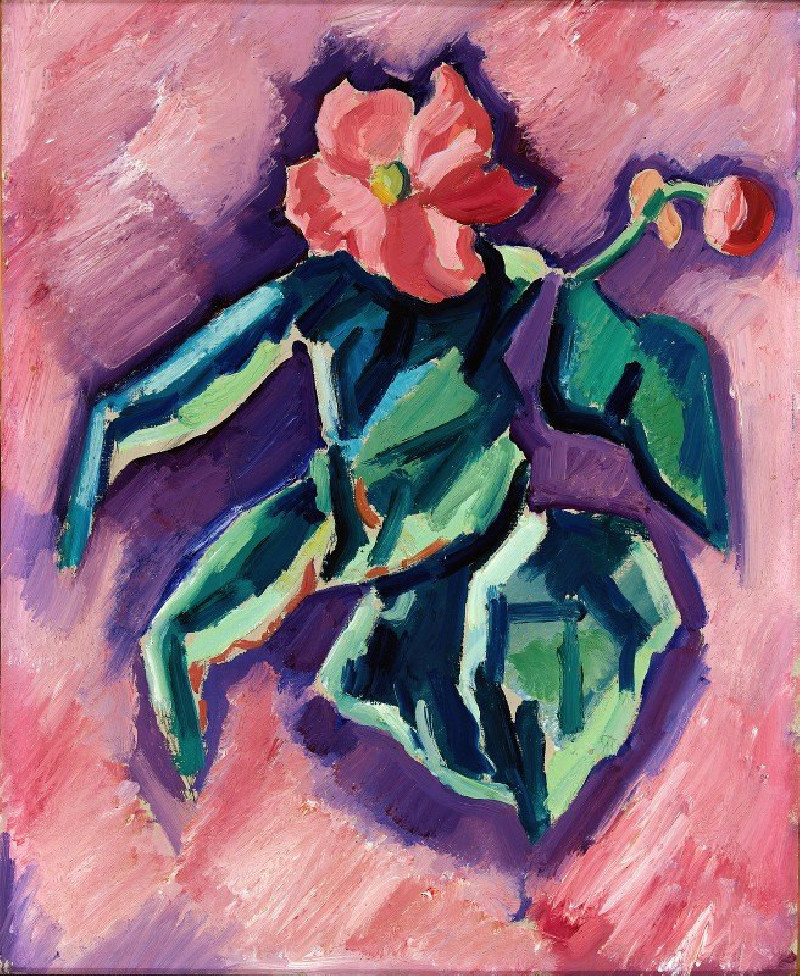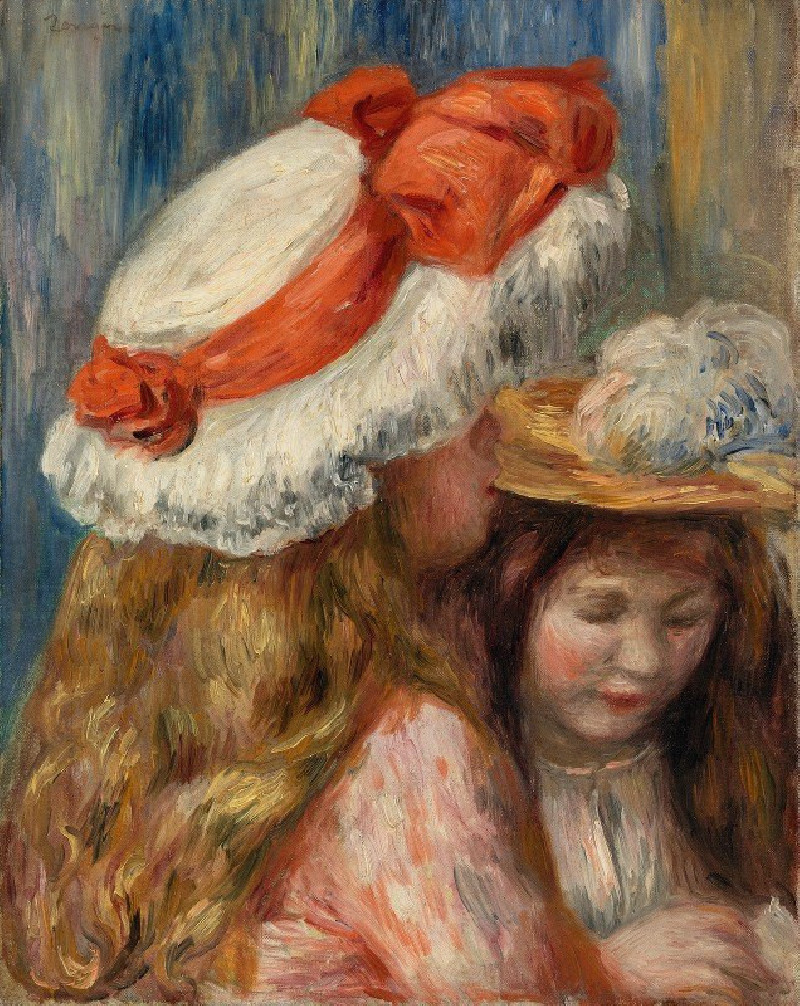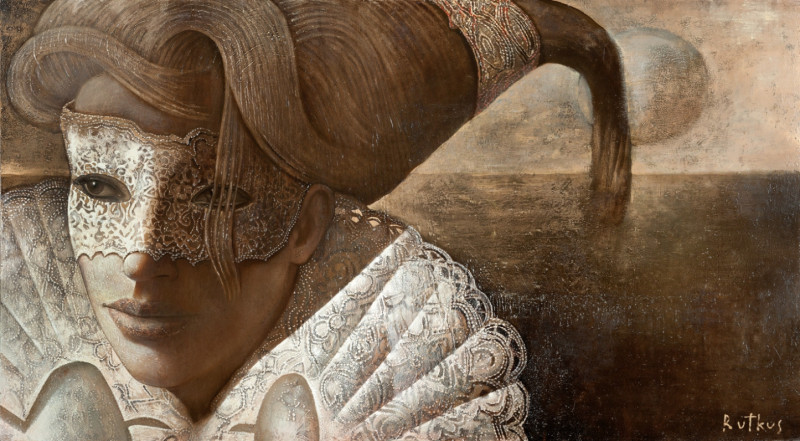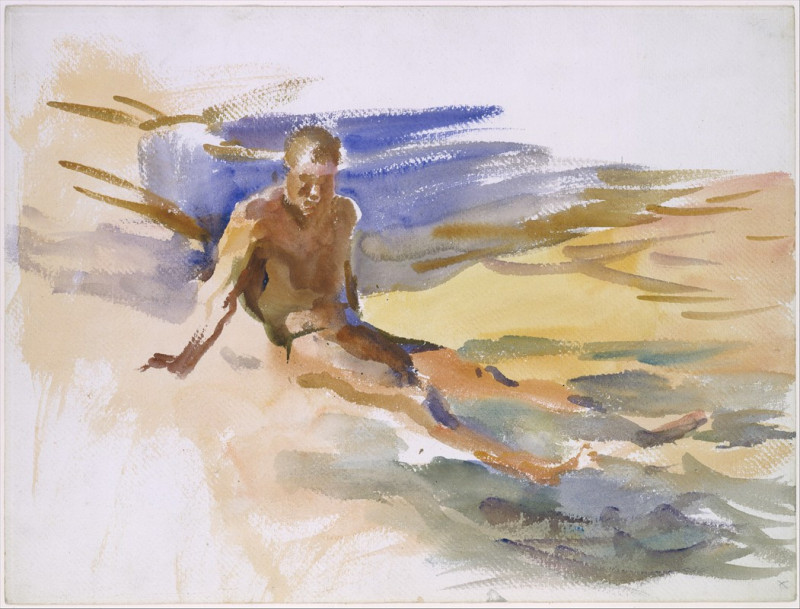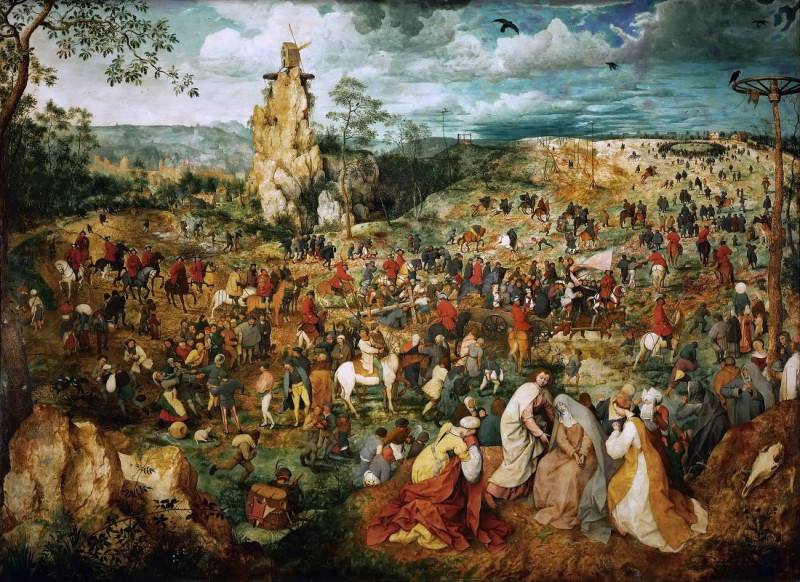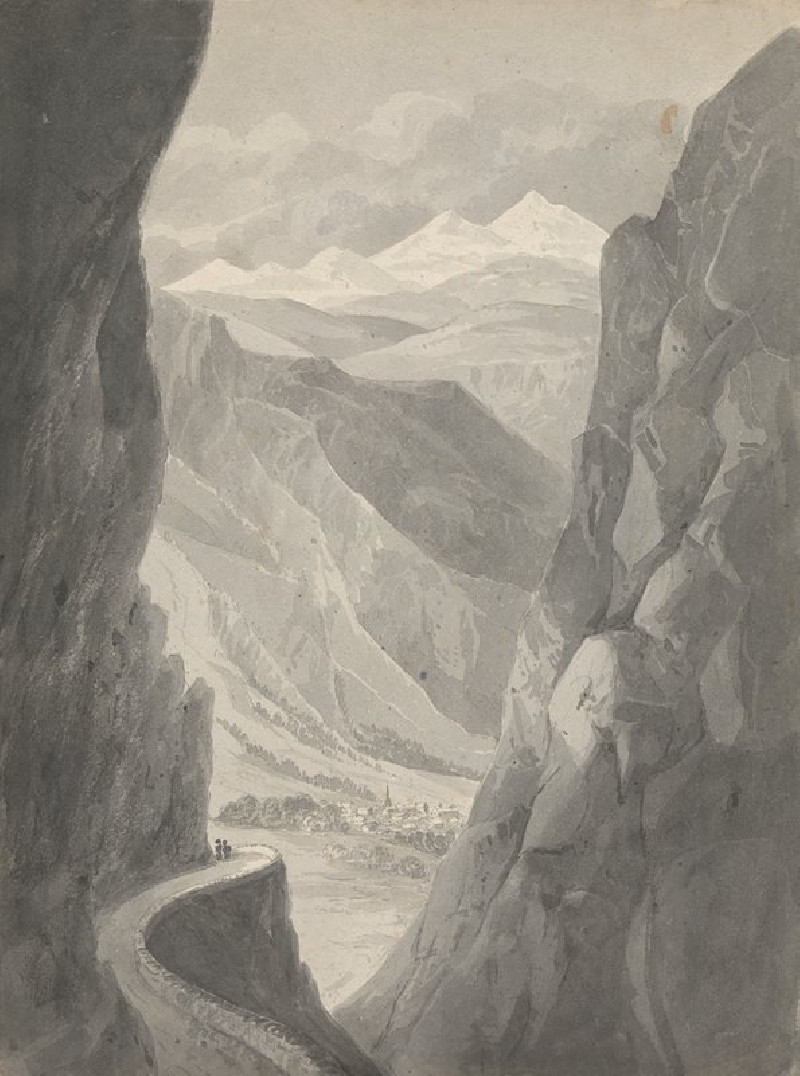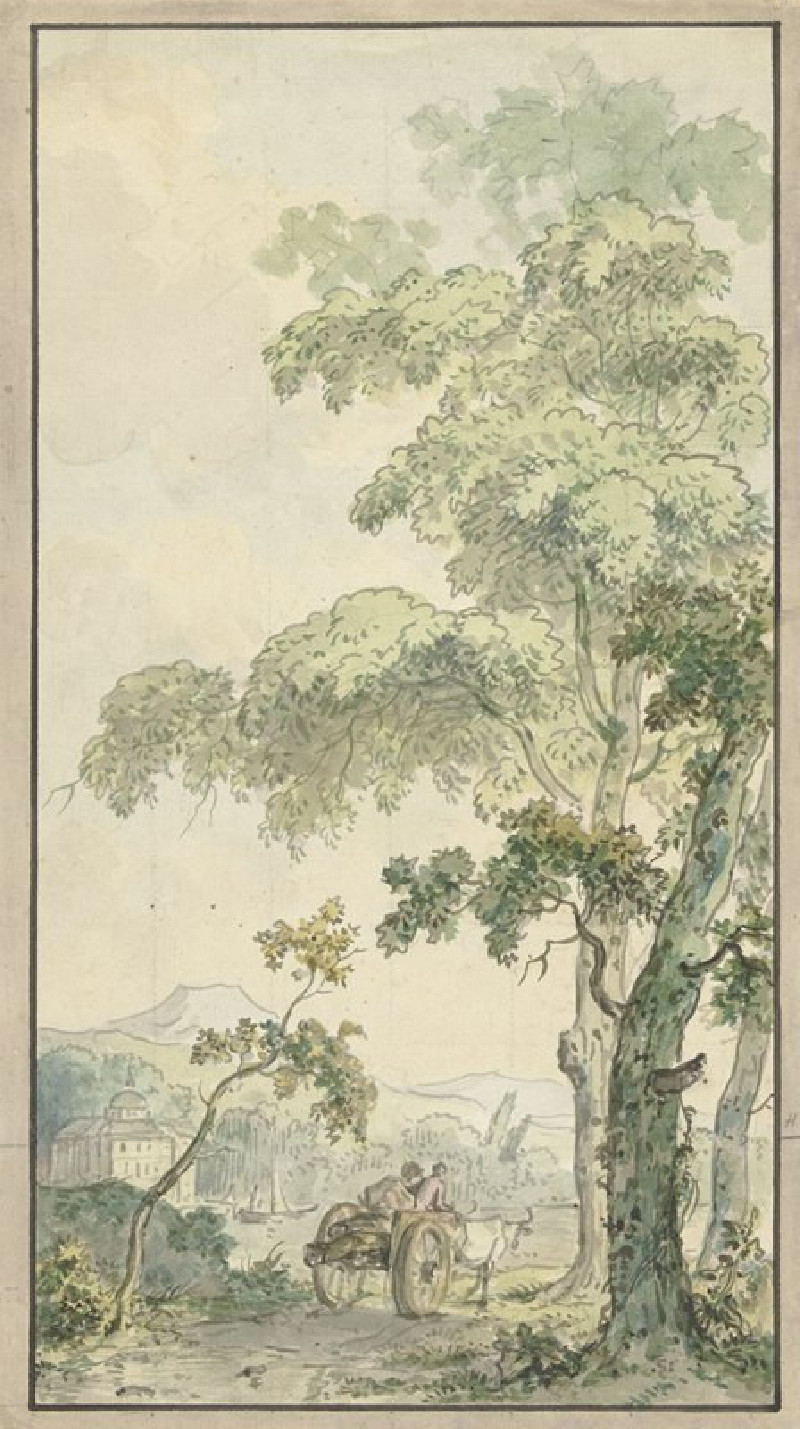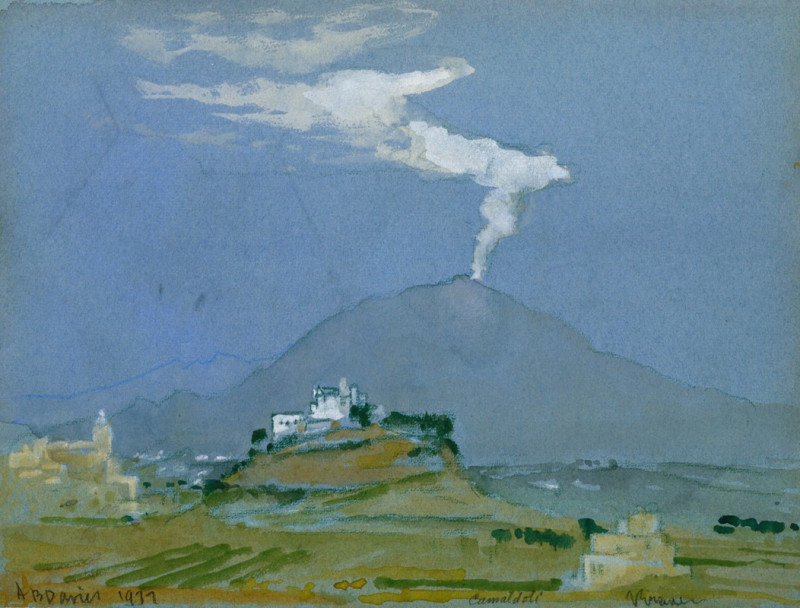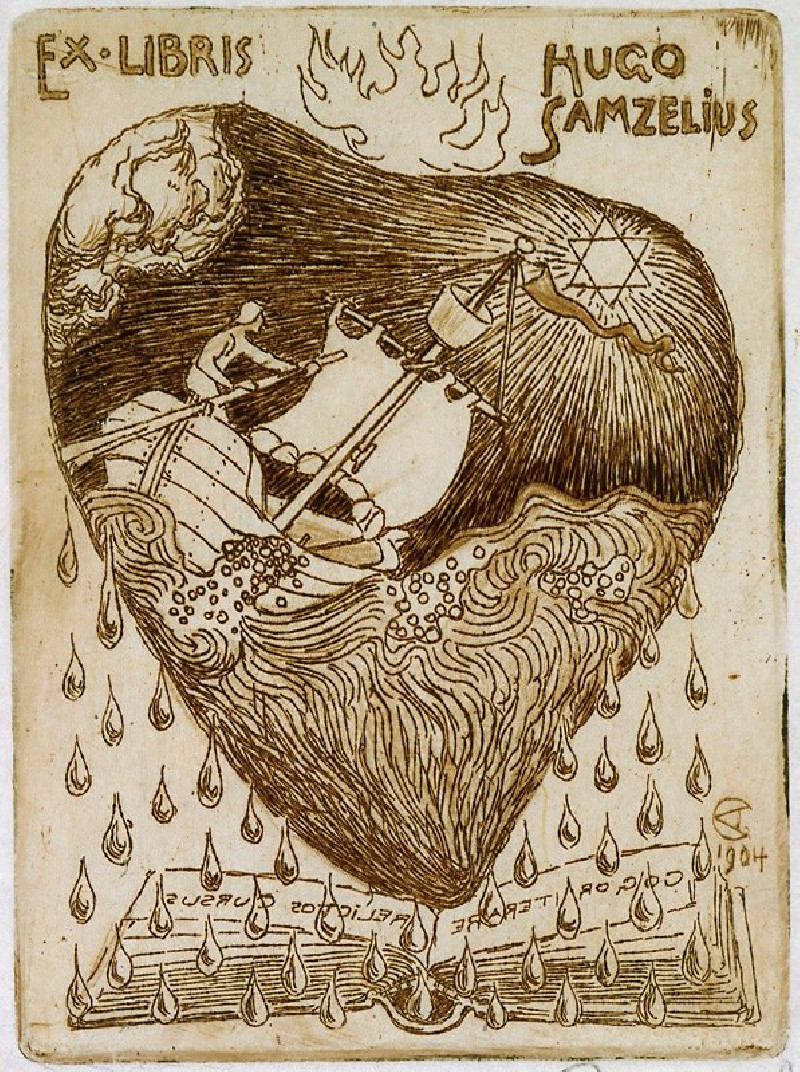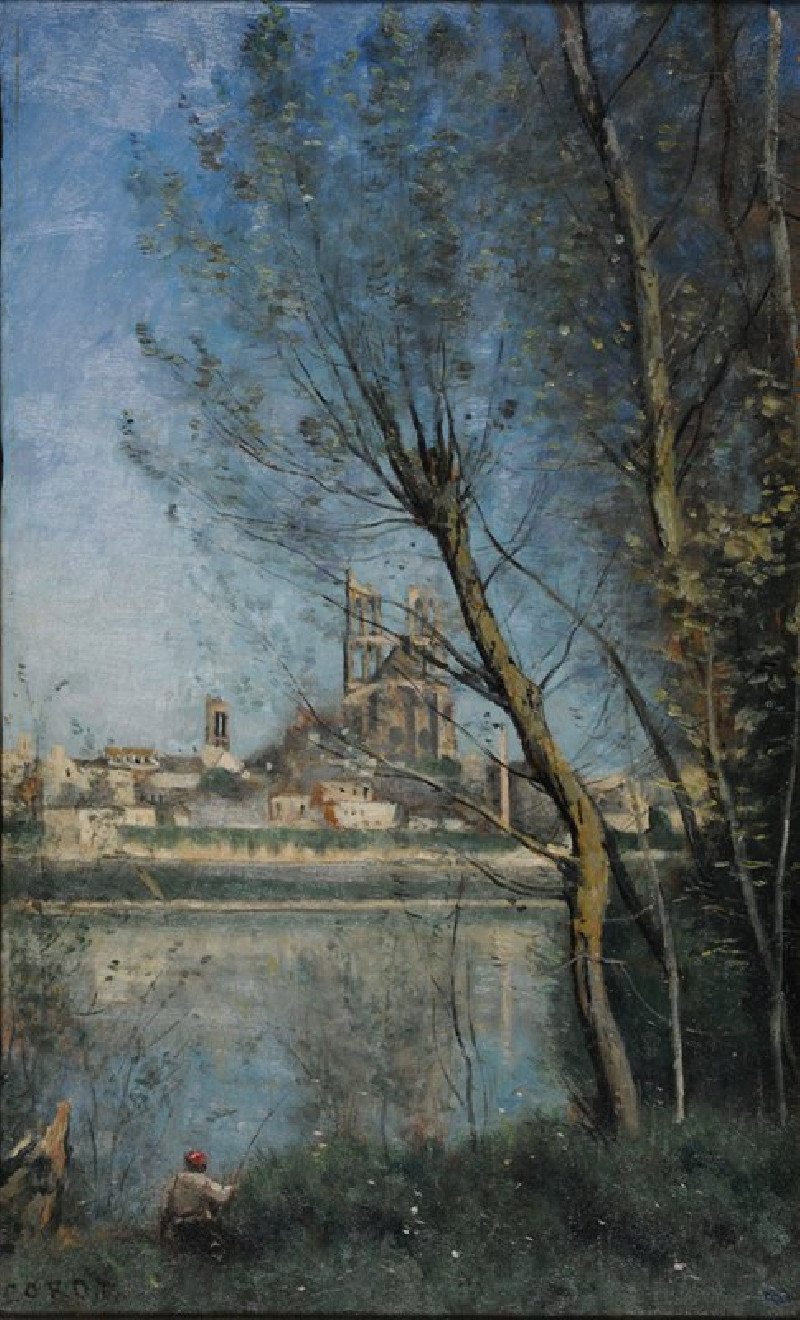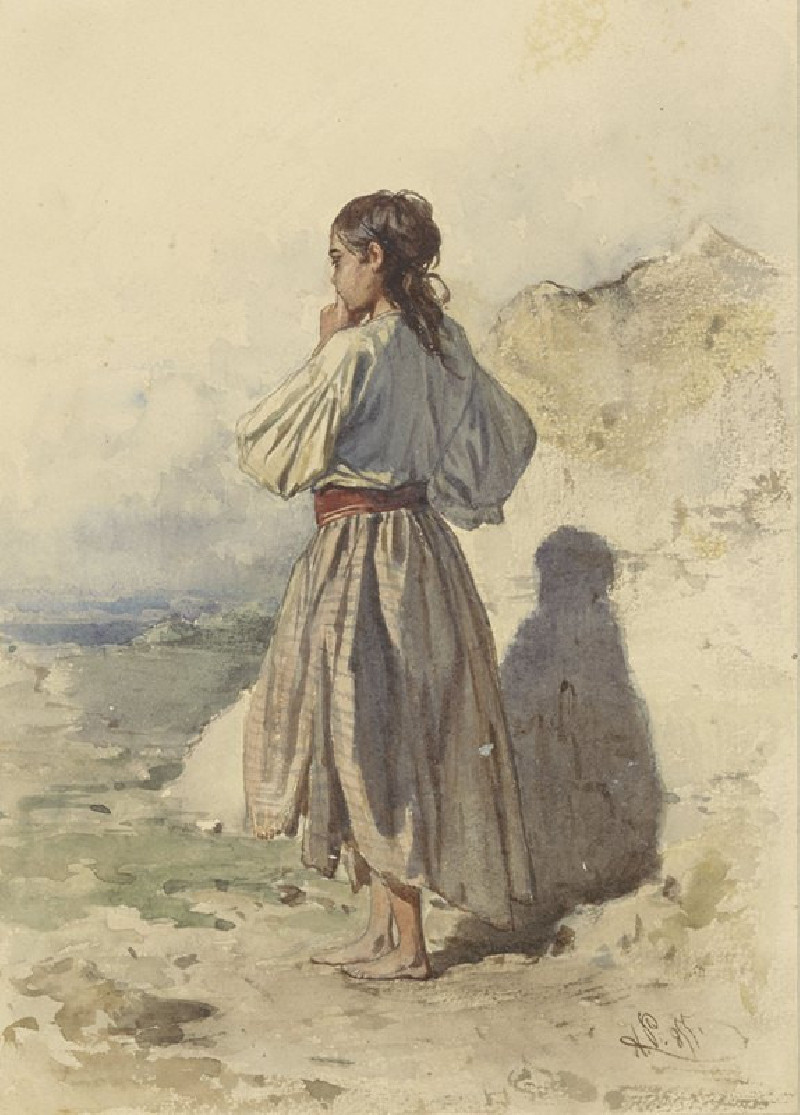Alaston mies (1902 - 1909)
Technique: Giclée quality print
Recommended by our customers
More about this artwork
Magnus Enckell, a celebrated artist known for his distinctive contributions to Finnish symbolism and expressionism, offers viewers a deeply evocative rendering in his work titled "Alaston mies" (Nude Man), created between 1902 and 1909. This artwork is a stunning example of Enckell's mastery in capturing the human form with a remarkable blend of sensitivity and power.The painting features a male figure captured in a dynamic posture, an embodiment of both strength and grace. Bathed in warm tones, the robust musculature and detailed rendering of the body suggest a moment of movement or preparation, possibly suggesting themes of anticipation or introspection. The contour lines also flow and repeat, giving the figure an ethereal and almost transient quality, as if he is caught between moments or movements.Enckell's use of color in "Alaston mies" is particularly striking. The contrast between the bold oranges and reds against the muted background emphasizes the figure, drawing attention to the physical form and muscle definition. This attention to anatomical detail not only celebrates the beauty of the human body but also reflects the artist's intimate understanding of human anatomy."Alaston mies" is more than just a study of the human figure; it's an exploration of human vulnerability and strength, rendered with both an artistic and an emotional depth that invites viewers to reflect on the complexity of the human condition.
Delivery
Returns
Magnus Enckell (1870-1925) was a Finnish painter and graphic artist who was born in Helsinki. He studied at the Ateneum School of Art and later at the Académie Julian in Paris. Enckell was greatly influenced by the Symbolist and Art Nouveau movements, and his work often featured moody and dreamlike landscapes and portraits. He was one of the leading figures of Finnish art in the early 20th century, and his work helped to shape the development of modernist art in Finland. He passed away in 1925 at the age of 55, leaving behind a legacy that continues to inspire artists to this day.


